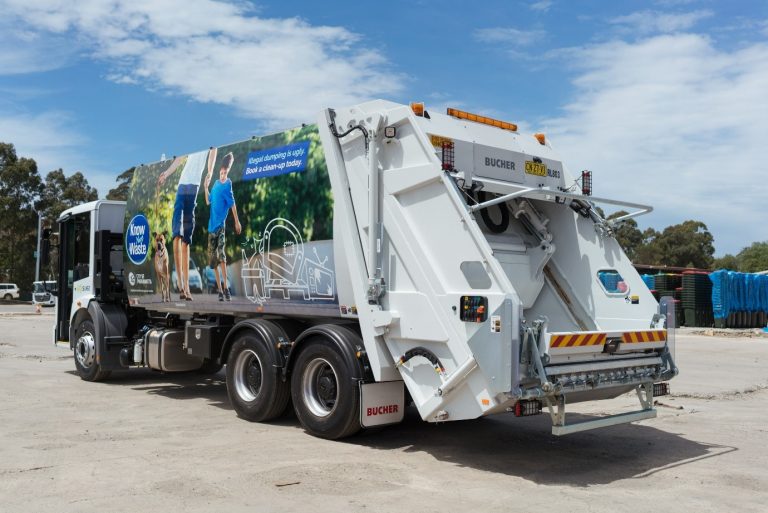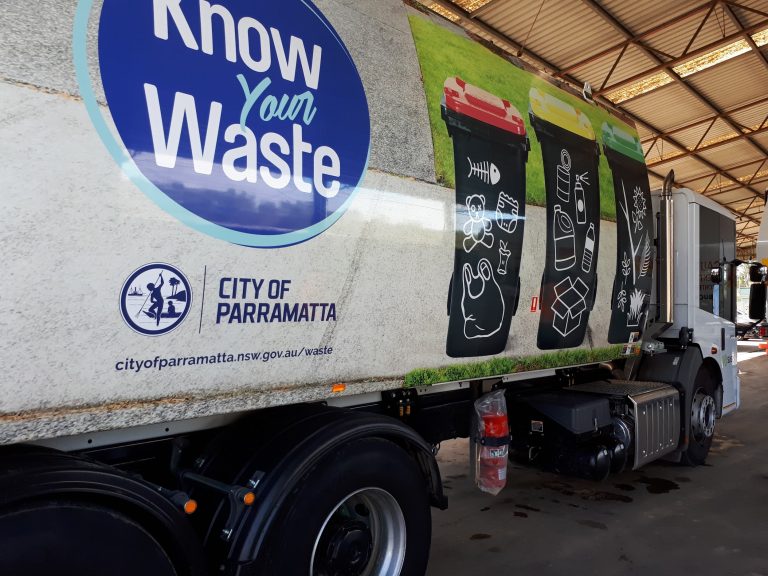Most streets in NSW get at least one heavy vehicle visiting to collect waste and recycling each week.
As part of our heavy vehicle campaign, we wanted to understand and explain some of the issues faced by heavy vehicle drivers. To do this we visited the SUEZ team at the Eastern Creek Waste Management Centre to learn about the specific challenges involved in their work.

Collections usually take place early in the morning, in the dark or low light, and require drivers to avoid parked cars, children heading to school, other vehicles, bikes, stray pets and wildlife.
Vehicle visibility, manoeuvrability, stopping distances and the devices used to lift and empty bins can add to the difficulty of the job. Waste management contractor SUEZ acknowledges the challenges faced by vehicle operators, and invests heavily in making what they do safer.
SUEZ educate their drivers at just 5km/h has the same momentum as a Toyota Camry traveling at 67km/h. We think this is an important message for all road users, helping us to compensate for the difficulties involved in operating a heavy vehicle in tight spaces with multiple blind spots. When a truck is travelling, even slowly, down your street, take time to ensure you and your children are acting with additional precaution.
Many garbage collection trucks also have an arm on the side that extends towards the curb to lift the bin for emptying. People riding bikes are permitted to overtake vehicles on the left, but a stationary collection truck may be about to extend this arm. Always check with collections workers before overtaking stationary truck on the right or left, and remember, if in doubt it’s best to wait until safe to do so.

“We were impressed by the passion of SUEZ staff for safety and at the thought, care and investment they put in at every level to safety training, monitoring, driver support and equipment,” said General Manager of Public Affairs, Bastien Wallace.
To help keep suburban roads safer SUEZ :
- Ensures drivers receive extensive training and supervision on each type of vehicle
- Provides ‘toolbox talks’ on safety issues before each driver’s shift
- Invests in vehicle technology to monitor the weight of loads and other issues that impact on handling and braking
- Invests in safety systems that monitors vehicles and drivers in real time
- Completes “Fit for Duty” checks before each shift to ensure fatigue, illness, medication or even impairment by drugs and alcohol
- Vehicle check report is completed to ensure vehicle is safe and all systems are working before leaving base every day
- Invests in sensor systems to prevent a truck reversing into a person or obstacle the driver may not see
SUEZ trucks are fitted with cameras all over them to help drivers get a visual on what’s in their blind spots.
How many cameras do you think are on this side loading truck?

